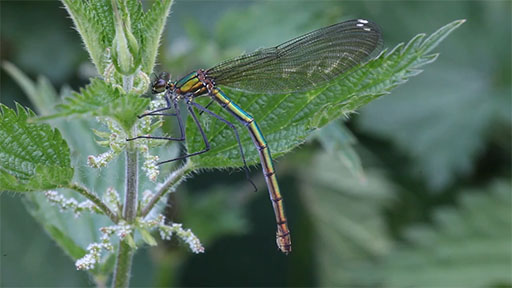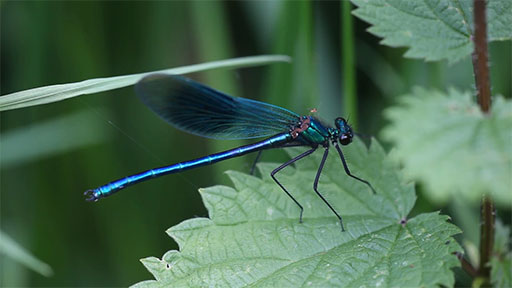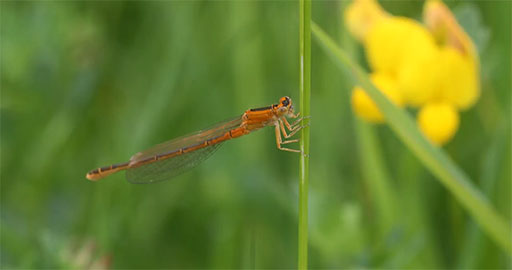2.1 Example 2
Here is another real world example for you to consider.
Example 2 Damselflies – identifying different species
To help us differentiate further, here are videos of male and female demoiselle damselflies:

Transcript: Video 3 A female demoiselle damselfly.

Are these green and blue insects one species or two? The truth is that they are just one species: the banded demoiselle damselfly (Calopteryx splendens).
To make identification even more confusing, a few species such as the scarce blue-tailed damselfly (Ischnura pumilio) not only have males and females of somewhat different colour, but also the females change colour markedly during their life from the beautiful orange shown in Video 5 to a green-brown colour scheme.

